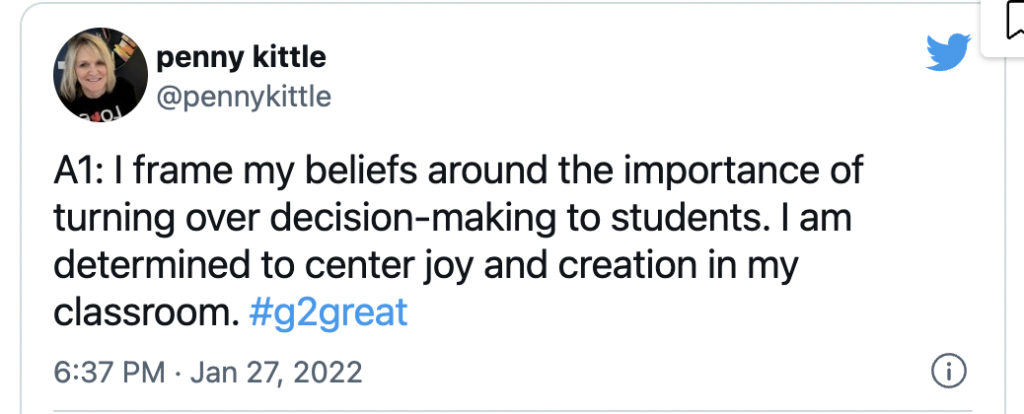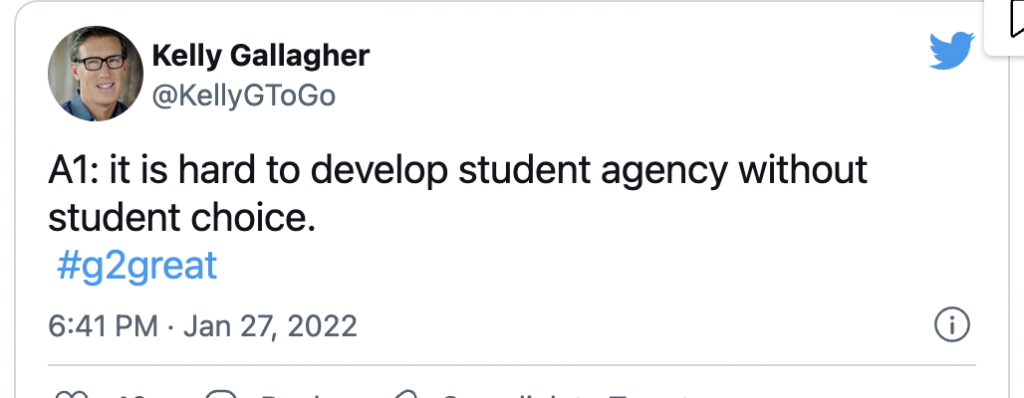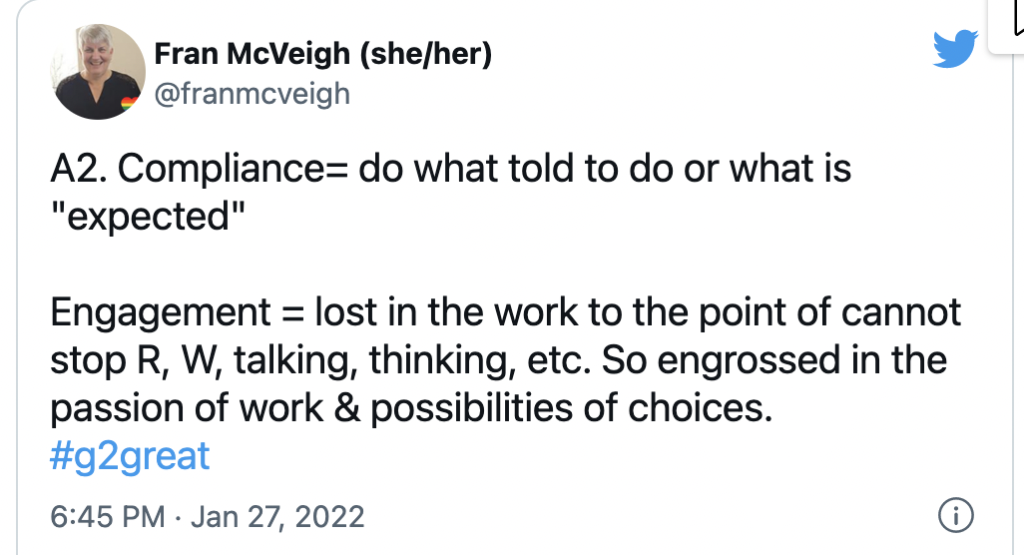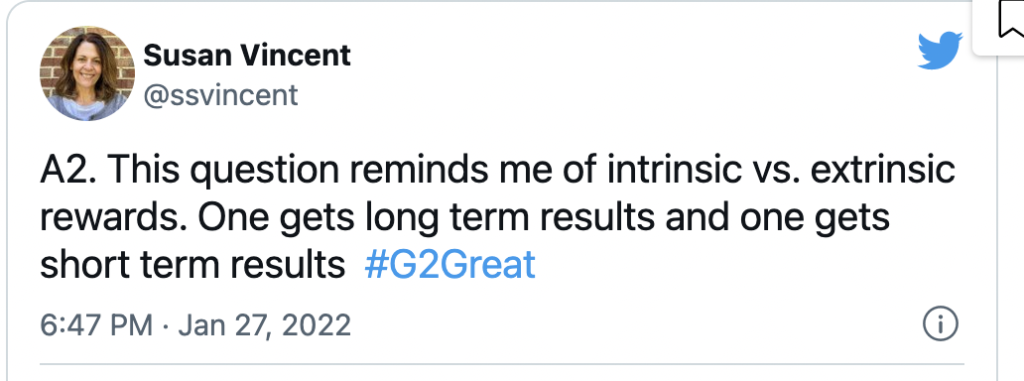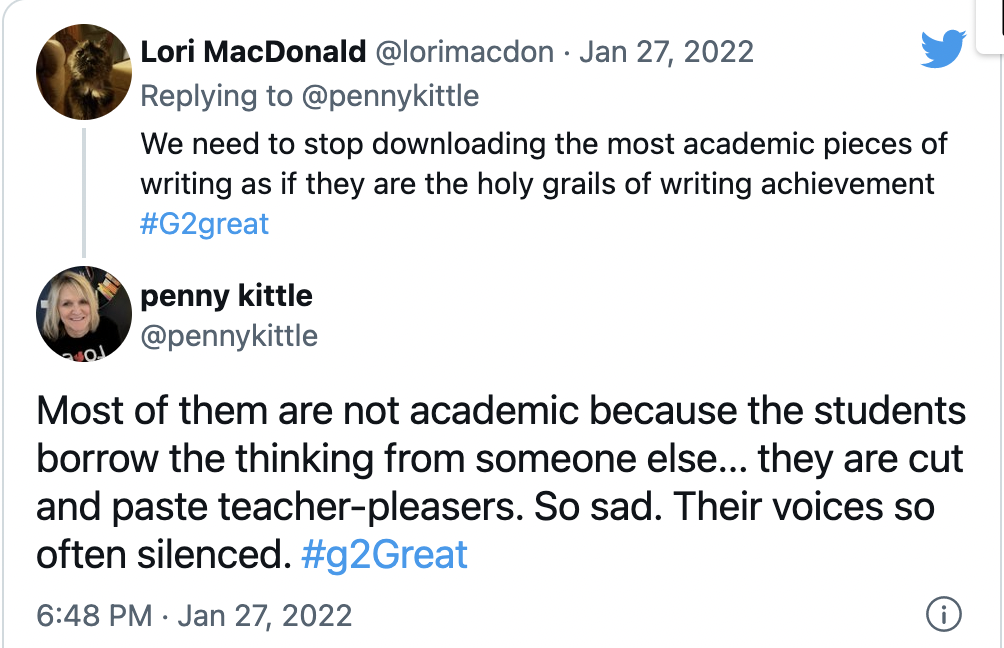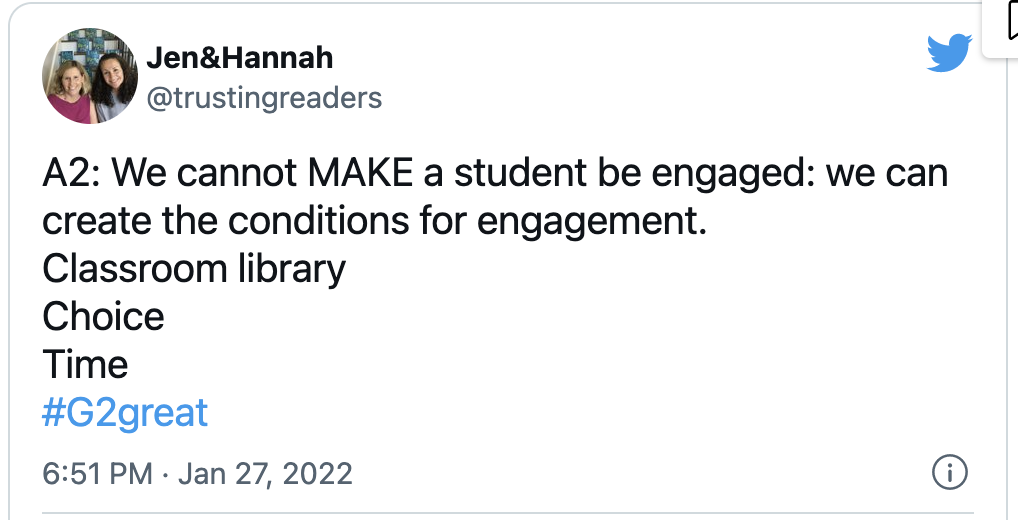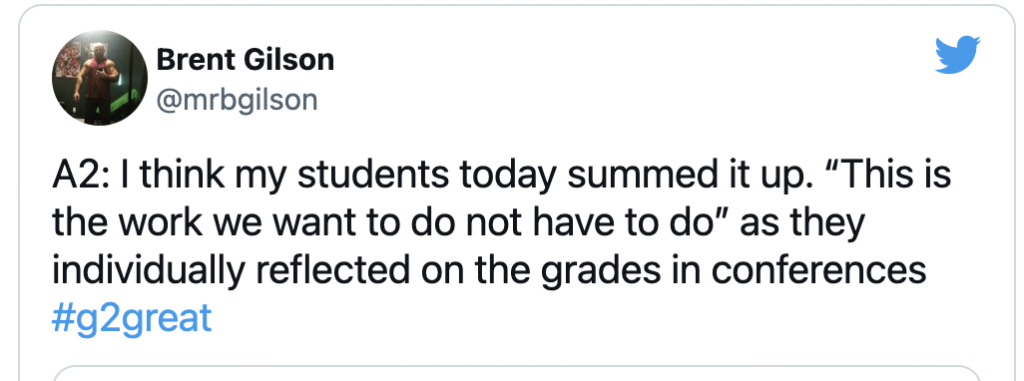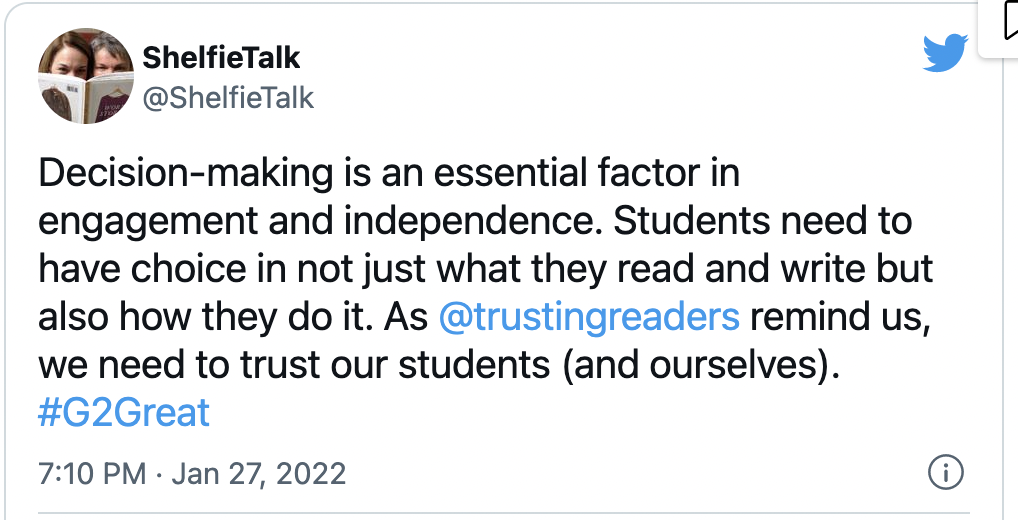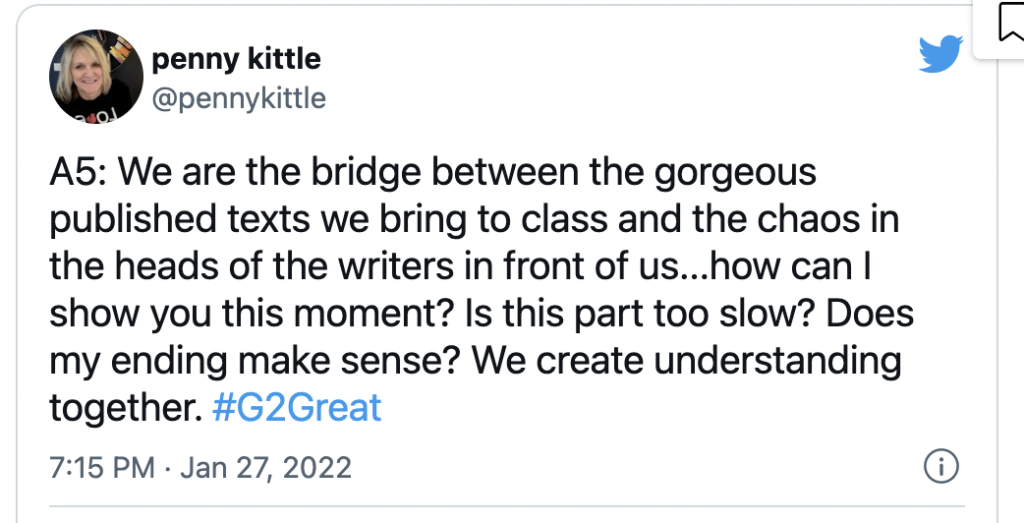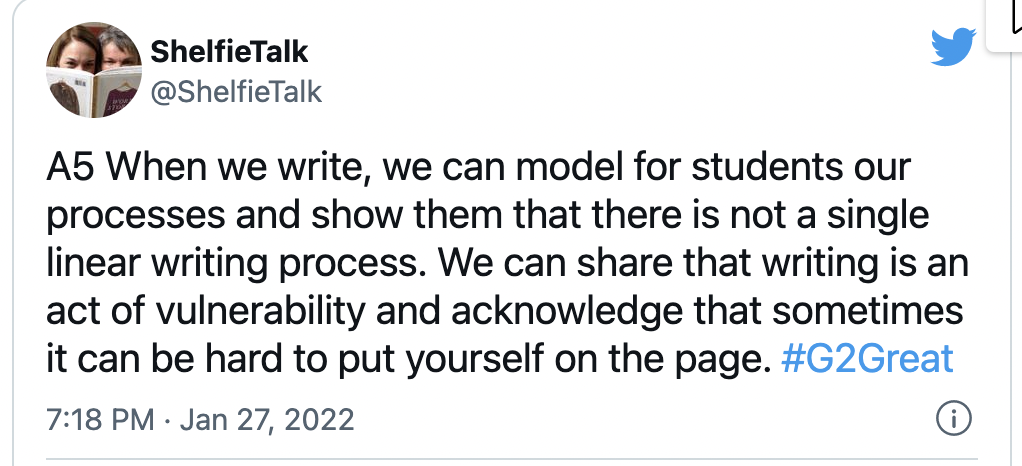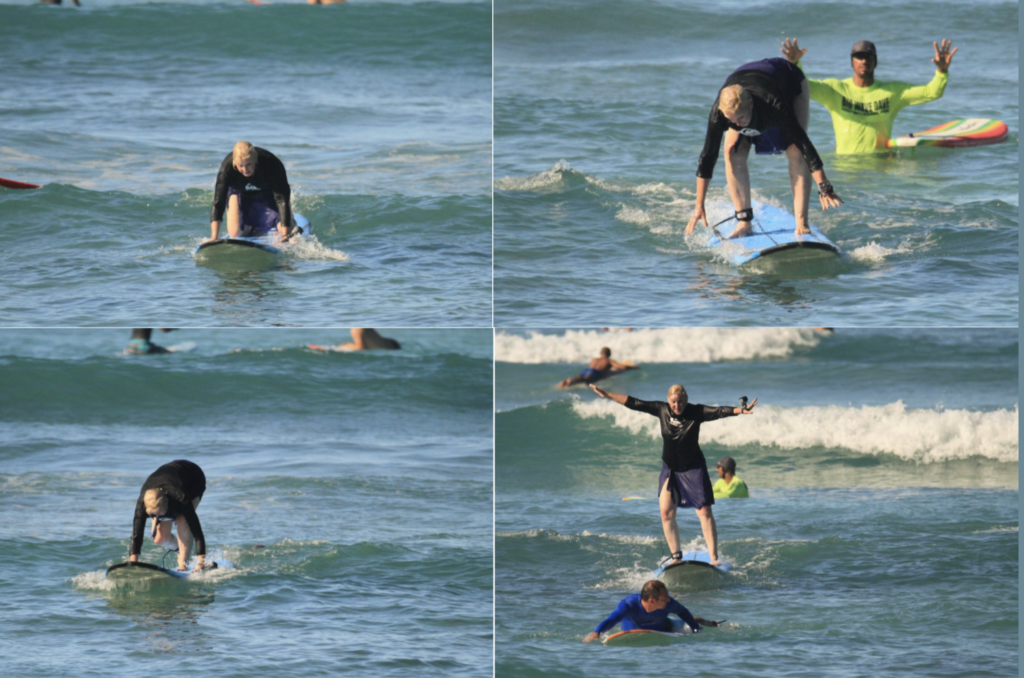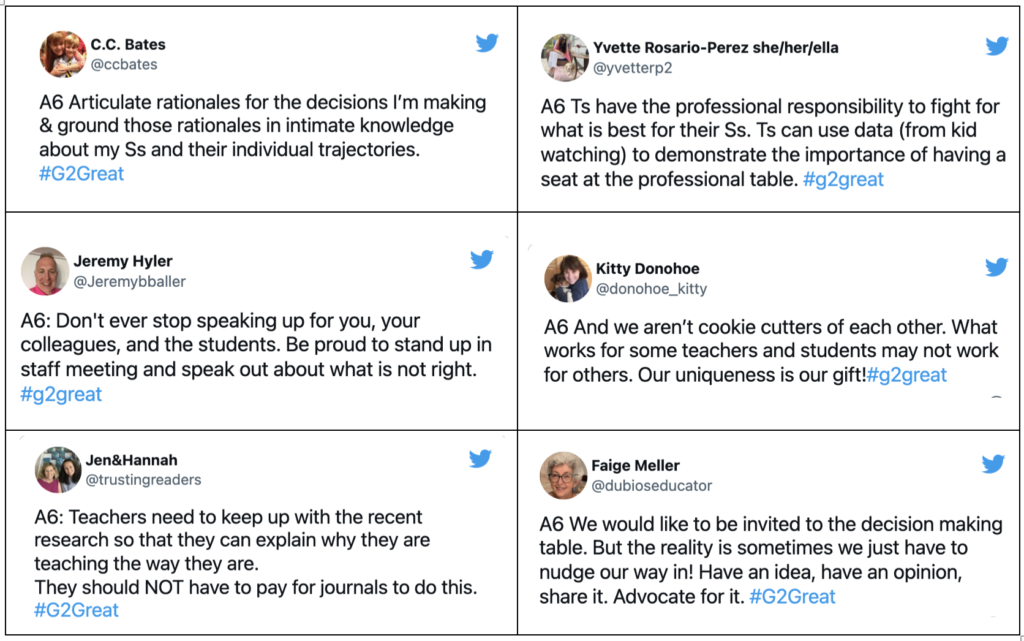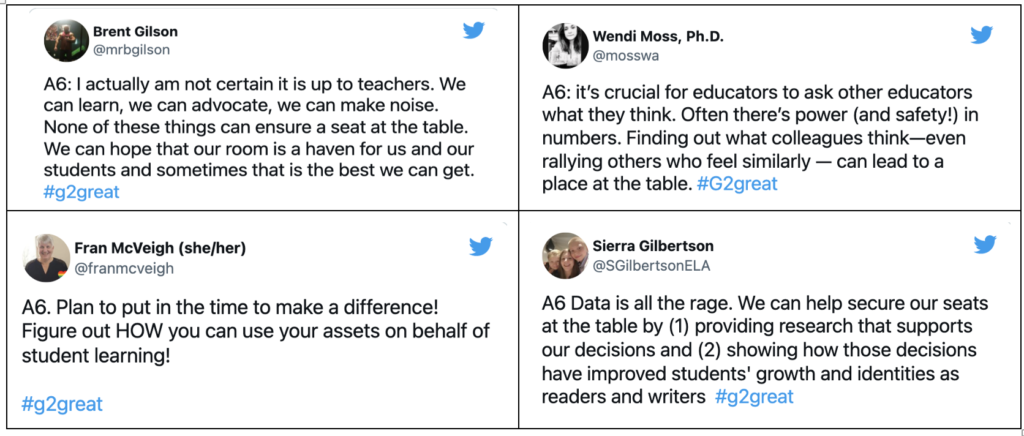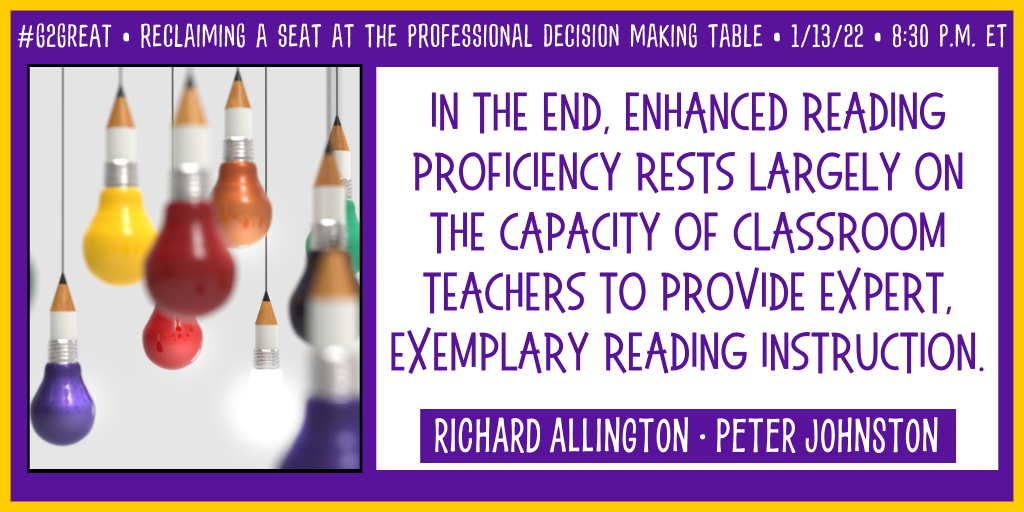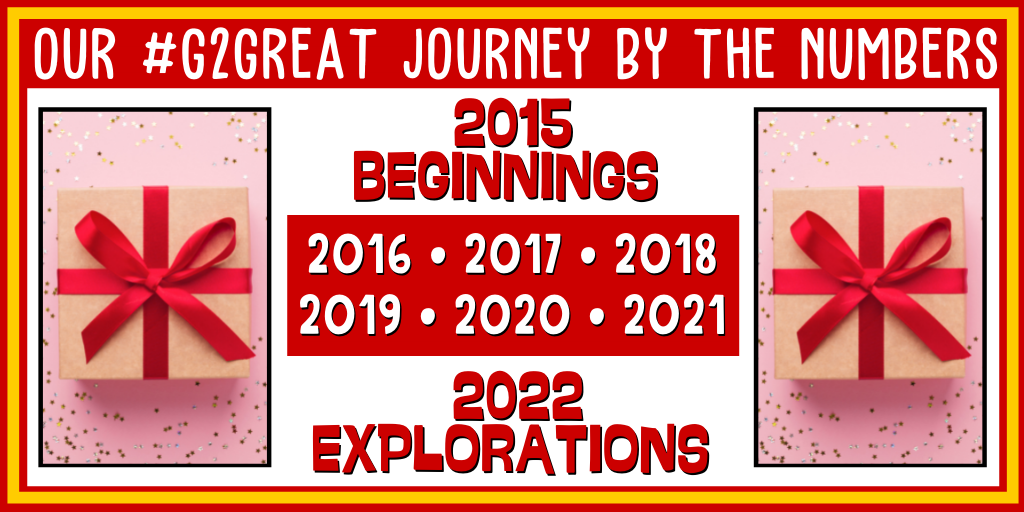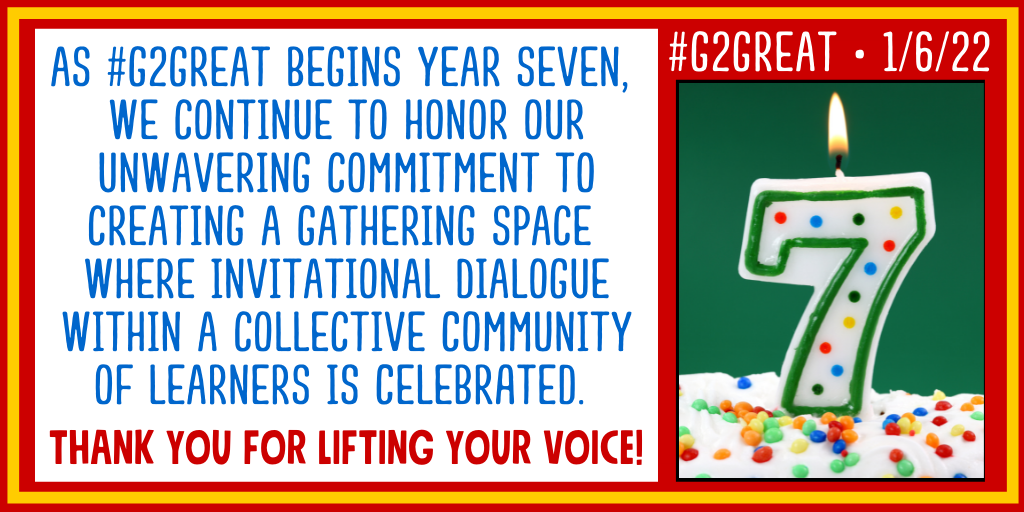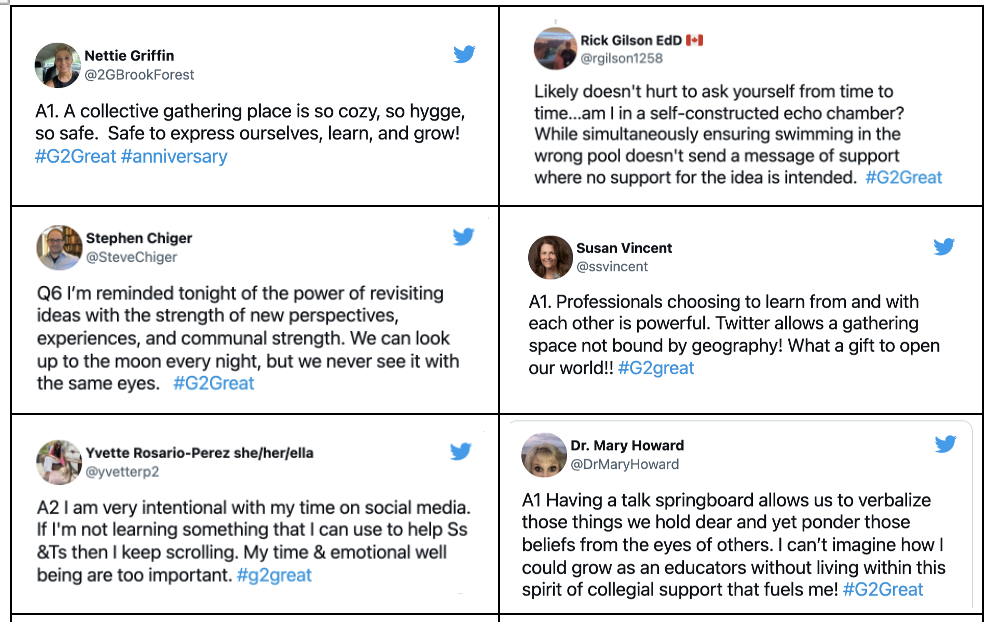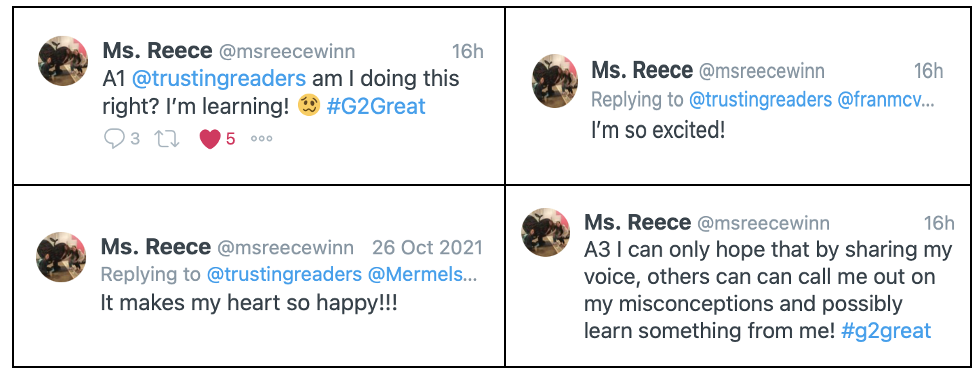
Blog Post: Brent Gilson
For an archive of the chat please click here
There is this question I have seen asked many times over the years, “Is this a lesson your students would buy tickets to attend?” Now setting aside that I am not a fan of the question I think the root of it is something we often ask ourselves as teachers, “Will the class find this work, this lesson, this activity engaging and meaningful?” This is a question I ask myself whenever I plan. I don’t want them to have to buy a ticket, the classroom is their space just as much as it is mine. How are we going to charge them for coming in? That said we want them to want to be there.
With all of that in mind, we were lucky this week for our #g2great chat to welcome back Penny Kittle and Kelly Gallagher as they shared their thinking and joined us in conversation around their new book 4 Essential Studies: Beliefs and Practices to Reclaim Student Agency. I have read many of Penny and Kelly’s books. Separately both Book Love (Kittle) and Write Like This Gallagher have heavily impacted my practice. Their joint effort 180 Days: Two Teachers and Their Quest to Engage and Empower Adolescents informs my daily classroom practices. I am so grateful to have the opportunity to share my thinking and that of chat participants this week.
As the chat began we reflected on what beliefs and practices guide our efforts to reclaim student agency.
This question really made me consider my own students. This week our semester ended. I am heartbroken because it was really the most fulfilling semester professionally as I turned over so much of the decision-making to my students. We leaned into choice. We explore multimodal and multigenre creation. Students crafted beautiful artwork in response to texts, digital compositions to present their identities, the writing in some instances felt as though it transported me away from all the noise and I could just sit in the peace of their words. As kids sat with me to discuss a grade they thought best demonstrated their work and achievement many shared they too were sad the course was over but they were grateful their last English class allowed them the opportunity to explore who they were as writers.
As our conversation continued we shifted to the topic of engagement vs compliance. How do we see these things as different? What does it look like in our classrooms and how does student autonomy help us with this shift from students completing work because they must to completing it because they want to?
As students joyfully crafted pieces for their final assignments they all spoke to the difference between the multigenre project they were interested in and the Critical Analytical Essays that are so often pushed in High School. The kids were the first to ask,
When am I actually going to need to analyze a novel in my life outside high school unless I am an English major in University?
Literally all my students
I didn’t have an answer for them. The only thing I could say was, we do it because we have to. The government (who required the test) canceled it because of Covid. We could move away from it and towards work, which they were more invested in. The engagement was evident and the excitement over the project led to some really incredible writing and other work that the kids were all proud of.
Ultimately my students felt like they were in the driver’s seat and this sense of ownership over their work helped them to create.
As we focus on providing students the autonomy to make their own decisions in writing and reading we still need to model for them the pathways to success. Providing options and ideas to help build their thinking around. As Penny says above we are the bridge.
A new semester starts for me this week. A new opportunity to learn from an amazing group of kids. I hate to say that I gave my students the autonomy to make their own decisions because I don’t think it is mine to give. I think by providing a space for them to see the power that they have as text creators. The ability that they have to make decisions to move their work in one direction or another, my students found themselves as writers. I am hoping the process repeats itself in its own unique way with this new group of students coming in.
The #g2great team is so grateful that Kelly and Penny joined us this week. Grateful for the wisdom in 4 Essential Studies: Beliefs and Practices to Reclaim Student Agency and the message that our students potential is infinite, sometimes we just need to get out of the way.
